
Laser 3D scanning - creation of a digital model of a physical body using a laser beam. The technology is non-contact, works at close and long distances, excludes damage to objects during scanning. The principle of operation of 3D laser scanners: a directional laser beam is reflected from the surface of the object, forming a cloud of points. Each point has its own coordinates in space. The software defines them and creates a finished 3D digital model based on this data.
From the review, you will learn where laser scanning is used and what equipment is used to solve related tasks.
Purpose of laser scanners
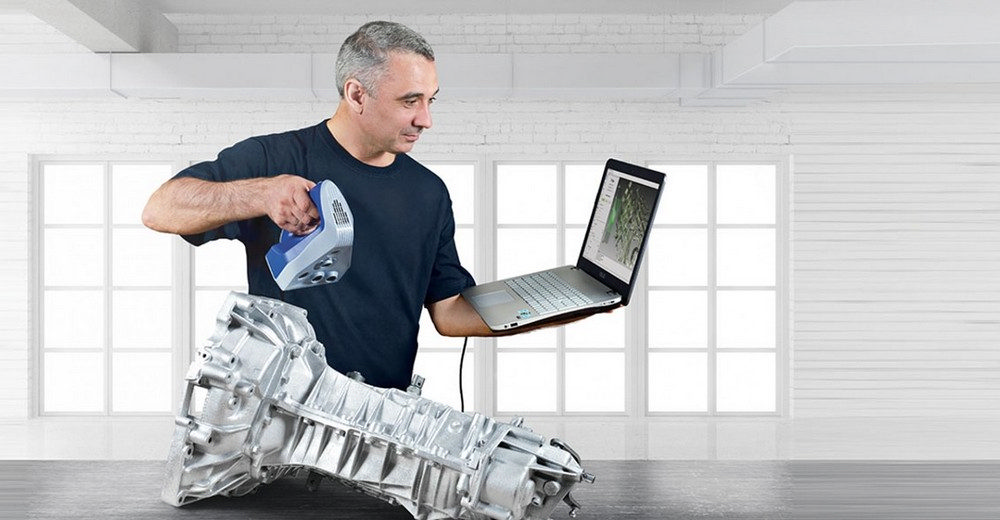
Source: newequipment.com
Compared to traditional measurement methods, laser scanners have an important advantage - they can digitize objects with complex surfaces and work in hard-to-reach places. The main areas of application of the devices are incoming and outgoing quality control in production, inspection of operating devices for the purpose of preventing and eliminating defects, reverse engineering and other areas.
Construction, reconstruction and repair of facilities

Source: ellisdon.com
During the preparation of the building project, it is necessary to assess the features of the site and the cost of the upcoming work. With the help of 3D laser scanners, a landscape model is created, on the basis of which further work is carried out. During the construction process, intermediate control of the geometry of future buildings is required: walls, corners, openings, etc. Laser scanning copes with this task more accurately and faster than the usual measuring technologies.
The basis for external or internal reconstruction is often an accurate digital model, on the basis of which changes and additions to the current interior or exterior are planned. Laser scanners are also irreplaceable in this area.
Road networks and transport
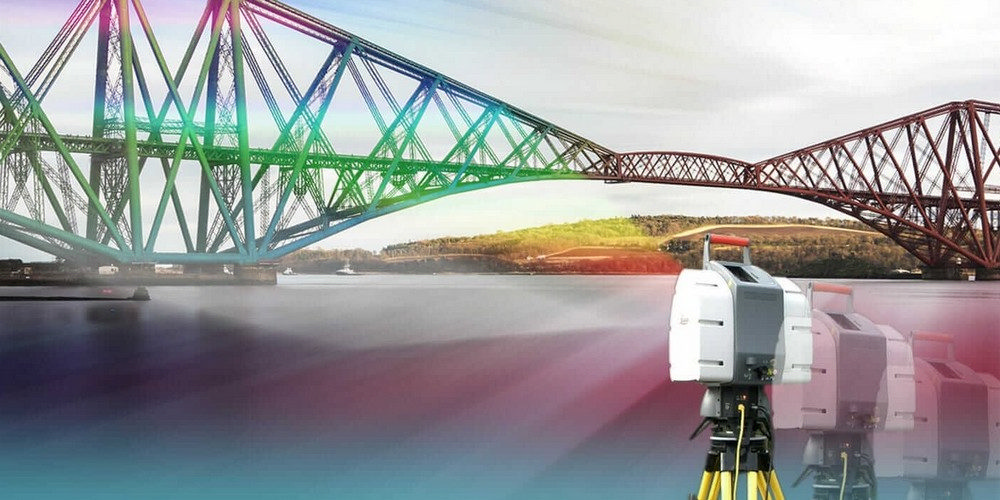
Source: autodesk.com
Laser scanning is becoming an integral part of the planning and creation of urban and suburban road transport networks, tunnels, pedestrian areas, railways, ports. The technology is used to assess the current state of coatings, plan and estimate the cost of repair work, to obtain models of long-term structures, for example, bridges. The equipment is used in the design, manufacture, repair and tuning of cars, air vehicles and ships.
Utilities facilities

Source: 3dscanner.es
With the help of 3D laser scanners, it is possible to quickly digitize and document engineering communications. Scanning significantly saves time during maintenance and reconstruction. The devices work remotely, minimizing the risks of people when working in adverse conditions and in hard-to-reach areas.
Oil production facilities

Source: ramboll.com
Oil-producing complexes located in water require constant monitoring of work processes. Objects are regularly exposed to unfavorable and changeable environmental influences: winds of different strengths and directions, currents, temperature changes, etc. 3D laser scanning is becoming an integral part of the inspection of oil production facilities. The equipment allows you to quickly identify and record deformations and other damage, monitor wear, calculate the terms of scheduled maintenance, and prevent accidents.
Forensic examination
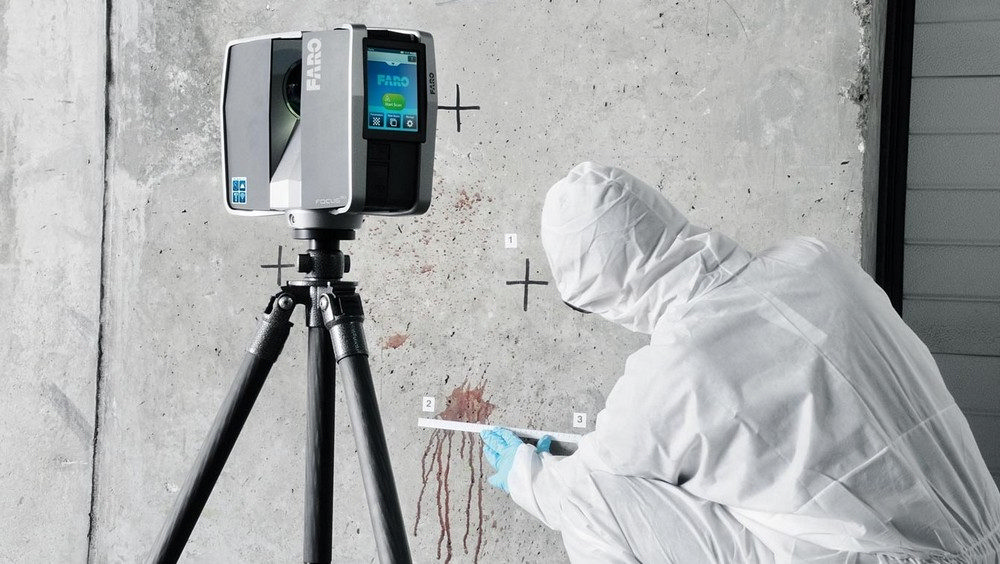
Source: faro.com
3D laser scanning is replacing photographs and manual measurements in investigative processes and forensic medical examinations. The devices create three-dimensional models of accident sites with precise fixation of the location of objects and the distances between them. The data is used in the process of pre-trial and legal proceedings.
Other applications

Source: news.microsoft.com
3D laser scanners facilitate and streamline workflows in the following areas:
- In cartography and geodesy - when creating plans of the area, maps, geographic information systems (GIS).
- In archeology - in the restoration and preservation of ancient artifacts.
- In paleontology, to create missing parts of skeletons found during excavations.
- In medicine, including plastic surgery and dentistry.
Overview of models and manufacturers
FARO Focus

Source: ifworlddesignguide.com
FARO is one of the popular manufacturers of laser scanning devices. The new S-Series of the Focus3D range stand out from other scanners in terms of lightness and compactness, as well as the ability to work in bright sunlight and keep in touch with the site using GPS.

The FOCUS 3D S 150 scanner works at a distance of up to one hundred and fifty meters, with an accuracy at a maximum distance of ± 2000 microns. The device is used in design, architecture and construction, for digitizing equipment and other objects.
You can find out more about this model on the website .

Source: youtube.com
Focus3D S 350 scans with the same accuracy as the previous device, however, the distance to the measured object is increased to 0.35 km. The device is designed for outdoor use.

Source: kkgeosystem.blogspot.com
SHINING 3D

Source: shining3d.com
FreeScan is a line of the renowned Chinese manufacturer of SHINING 3D digital equipment. These are universal laser hand-held 3D scanners FreeScan X5 ( X5 + ), FreeScan X7 ( X7 + ) weighing up to 1 kg, with an excellent set of professional characteristics.
Basic parameters:
Specifications
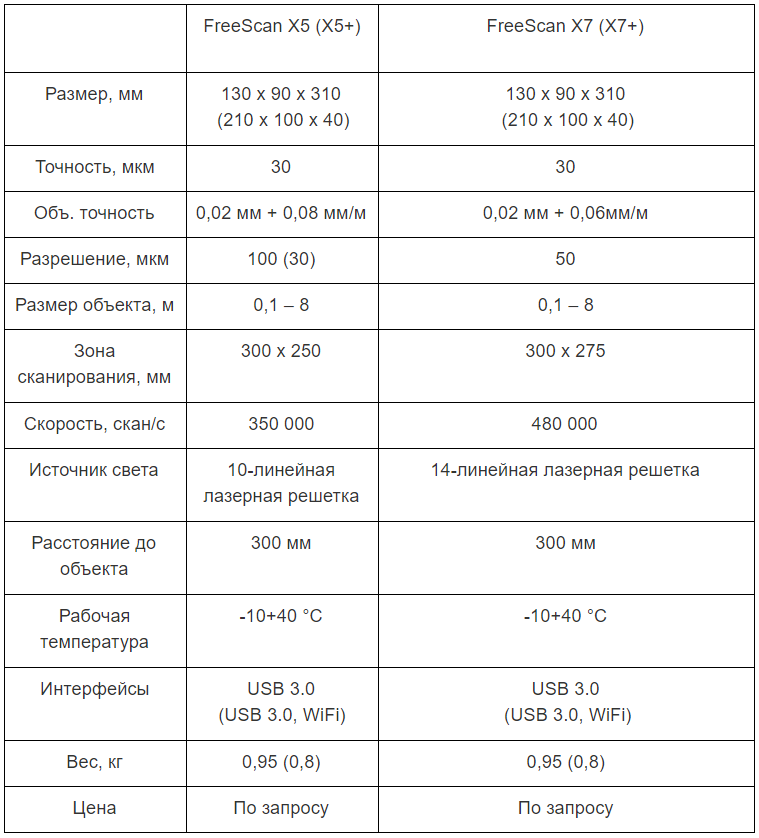
Creaform
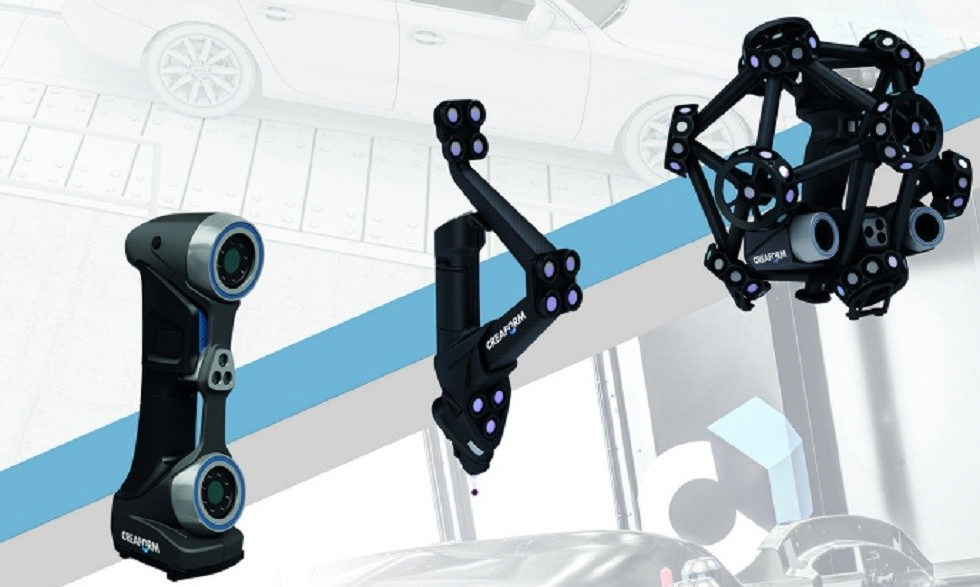
Source: foundry-planet.com Creaform's
SCAN 3D range is distinguished by high quality scanning combined with ease of use. Portable laser scanners HandySCAN 3D , MetraSCAN 3D have an intuitive interface, do not require special skills and complex user training.
Instrument characteristics:
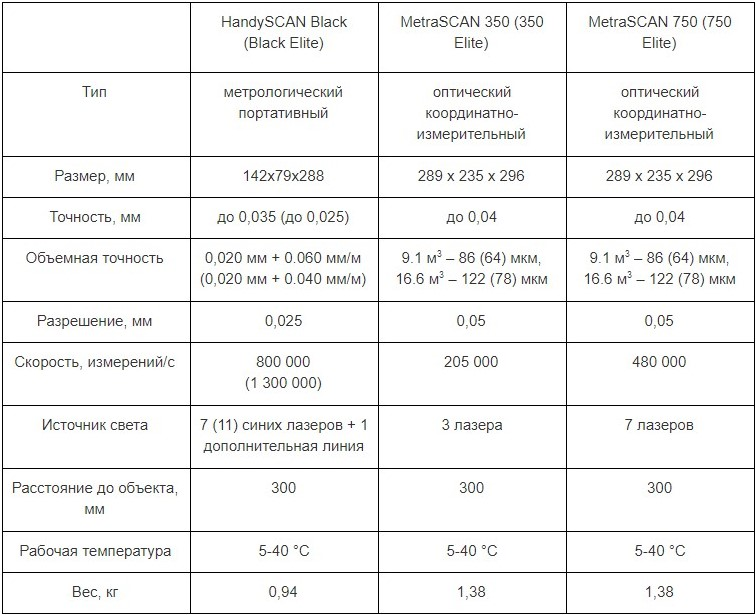
ScanTech
Handheld range

Source: cmmxyz.com
The HandHeld Prince Series uses blue and red laser beams to scan large and small objects with high precision. The scanners can operate in bright sunlight and low light conditions. Due to its compact size, high speed and detail, the equipment is widely used in reverse engineering, quality inspection, digitization of museum, archaeological and other objects.
Main characteristics:

Composite Series

Source: twitter.com
In addition to the dual scanning mode, the KSCAN20 is equipped with a photogrammetry system, thanks to which the working area of the device is 2.5m * 3m with an accuracy of 35 μm / m.
Blue and red lasers provide high-speed scanning up to 650 thousand measurements per second with a resolution of 0.01 mm.
Main characteristics:
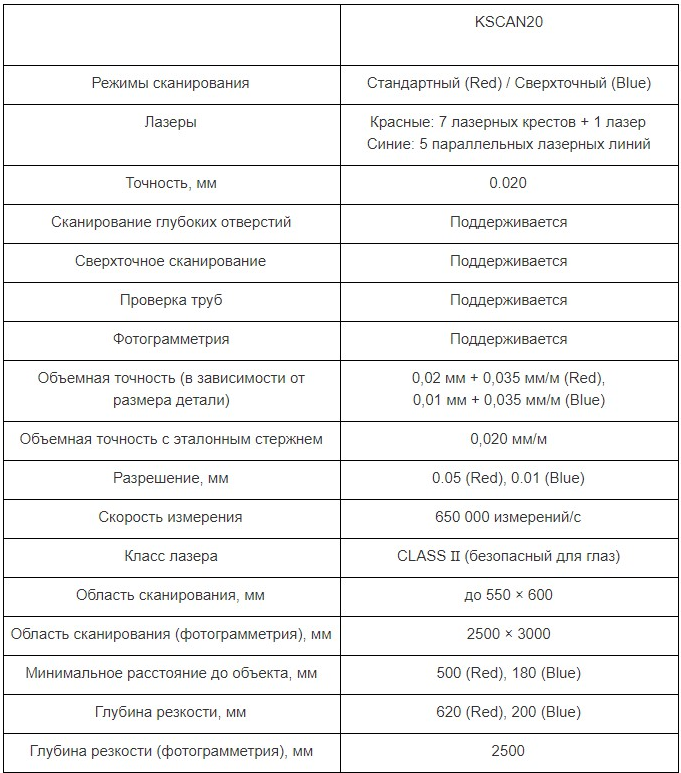
Areas of application of 3D laser scanners
Reducing financial and time costs in construction with FARO Focus

Source: autodesk.com
Investments Gilbane Construction Company of the United States in the acquisition of the laser scanner FARO Focus-S 350, the software and the training of employees amounted to $ 60 000. At first glance, the amount seems too large for the small-scale firms. But, after the calculations, the company's management came to the conclusion that the investment will pay off in the shortest possible time.
According to Gilbane's director of 3D design, John Tocchi Jr., after the introduction of a new expensive technology, the company began to use equipment even in areas where it was not originally planned. Professionals managed to save $ 30,000 in one hour of work on Focus-S 350 and Autodesk Revit software.

Source: autodesk.com
Digital modeling of ductwork and other systems eliminated errors in physical installations that could take weeks. The use of FARO Focus in the assembly of plumbing, electrical and mechanical installations helped to optimize costs at all stages of work
Case "Modernization of the University of Miami Building"

Source: elevar.com
At the time of the start of work, the architects had at their disposal the drawings made 85 years ago, and a little more than 4.5 thousand square meters of the old building. Using a 3D laser scanner, Gilbane digitized the training space in one working day. The modernization of the supporting structures, as well as the main utilities: plumbing, electrical and ventilation, was based on the data obtained from the scan.
Quality inspection with ScanTech

Source: 3d-scantech.com
The advantage of metal stamping technology, before forging and casting, lies in the lower weight and thickness of the parts obtained. The use of molds provides high accuracy and maximum compliance of the obtained parts with the specified characteristics, but does not completely exclude deviations and deformations. This, in turn, can lead to difficulties in assembling finished products and a decrease in product quality. Therefore, constant quality inspection is a necessary part of production.
Having understood the manufacturer's tasks, ScanTech specialists suggested checking the quality of stamped parts using a PRINCE laser scanner. The ability to switch between blue and red laser modes allowed the device to combine the functionality of traditional portable and metrological 3D scanners. The mode of operation with an active red laser beam ensures fast digitization of objects. In the case of increased requirements for accuracy and detail, turn on the blue laser beam mode.
The photo shows the stages of work:
1. Installation of markers - takes about two minutes.

Source: 3d-scantech.com
2. Digitizing a part - takes about three minutes.
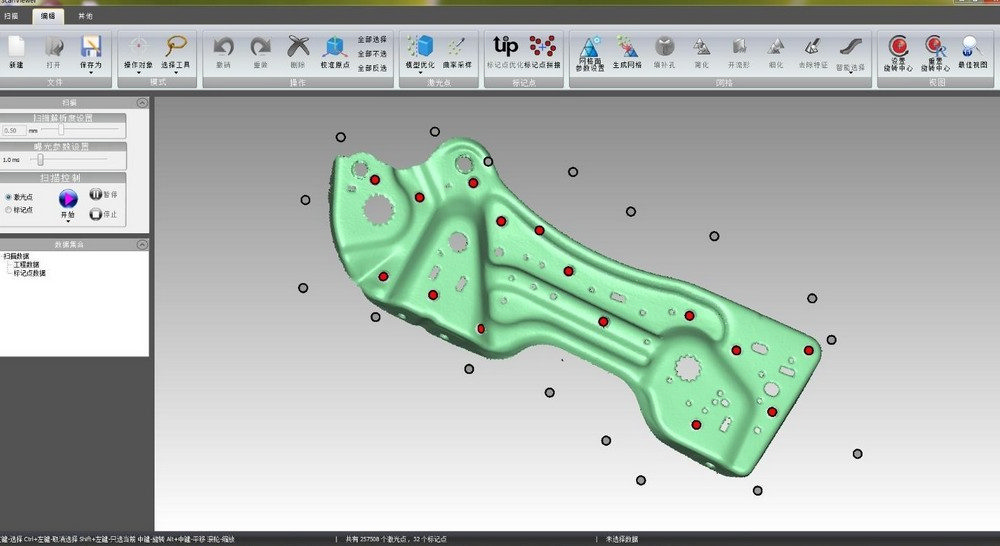
Source: 3d-scantech.com

Source: 3d-scantech.com
3. Identification of deviations - lasts 3 minutes.

Source: 3d-scantech.com The
digital model demonstrates parameters and deviations, allows you to correct errors at the design stage. The case clearly shows that the process required a minimum of time and effort.
Using FARO 3D Scanners on Justin Timberlake's World Tour

Source: disguise.one
The scenery for Timberlake's "Man of the Woods" program is the natural landscapes "brought to life" on stage. First, the ScanLAB team digitized a number of forest areas in the US state of Oregon. Laser projectors then directed images over the auditorium and stage, painting amazing views of the Portland landscape on translucent canvases suspended in the air.

Source: faro.com
Two Faro Focus X 330 laser scanners with Faro Scene 6.2 software were used to prepare visual effects . It took 40 digital copies in total and 1 working day at the concert hall.

Source: www.esa.int
Given the limited preparation time, large areas of surfaces for displaying images and, accordingly, the need for high-resolution images, it was impossible to create visual effects in a short time without using the selected technology.
Recommendations for the selection of 3D laser scanners
In the review, we introduced you to the equipment of market leaders with an excellent reputation. All the devices described have high performance, so we recommend paying attention to these devices for use in various fields:
FARO Focus: Focus3D S350 , Focus 3D S150 .
Creaform: MetraSCAN 350 ( 350 Elite ), MetraSCAN 750 ( 750 Elite ), HandySCAN Black ( Black Elite ).
SHINING 3D: FreeScan X5 ( X5 + ), FreeScan X7 ( X7 + ).
ScanTech: KSCAN20 ,PRINCE 775 , PRINCE 335 .
Outcome

Source: 3d-scantech.com These
examples clearly prove that the use of 3D laser scanning optimizes workflows in many areas. The range of tasks solved with 3D laser scanners is constantly expanding.
Buy a professional 3D laser scanner in Top 3D Shop - experienced specialists will help you choose the most suitable equipment and software for your business, and offer a production modernization project.